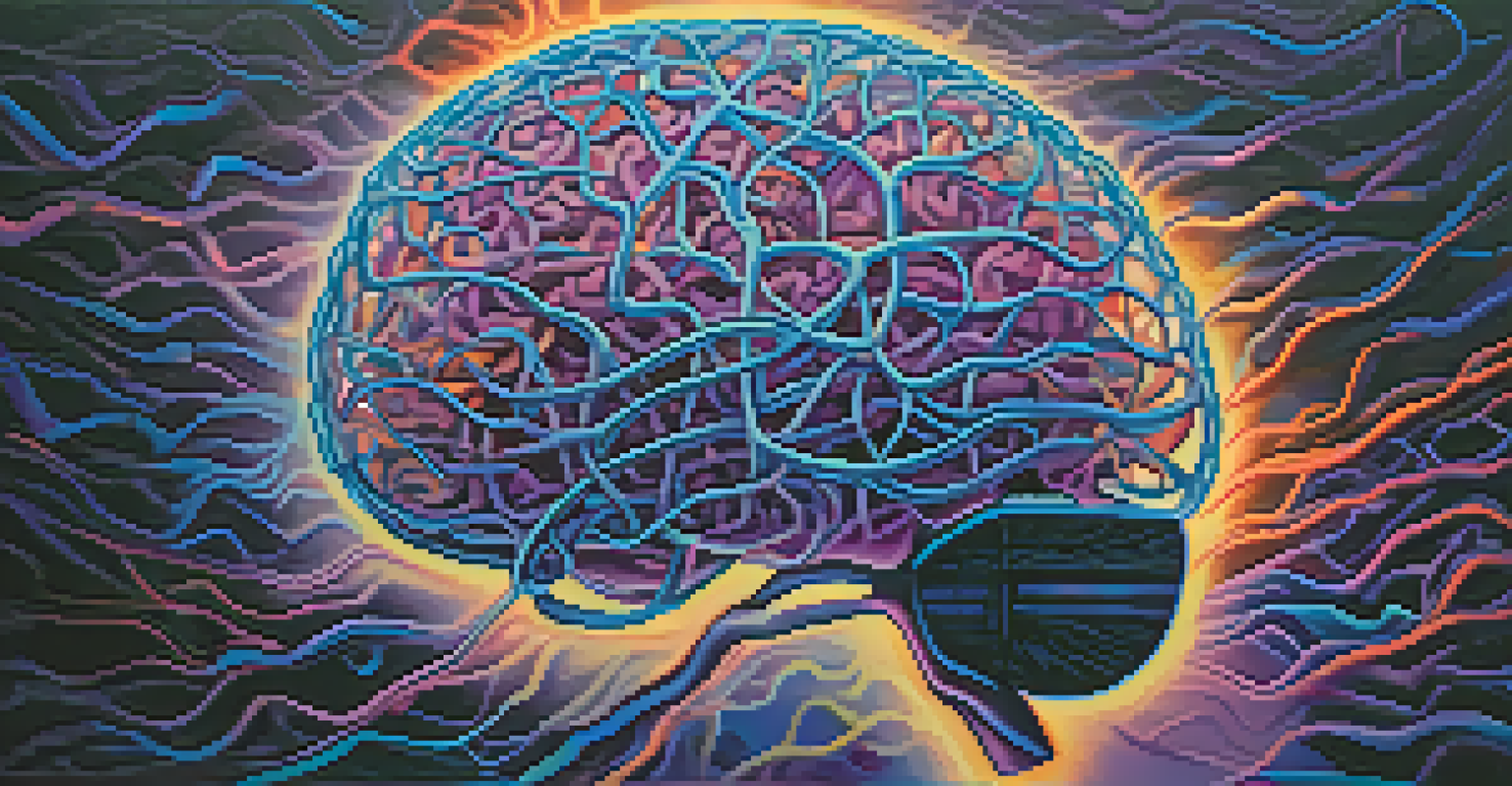The Science Behind Intention and Entheogen Use

What Are Entheogens and Their Role in Human Experience?
Entheogens, often referred to as psychedelics, are substances that alter perception, mood, and cognitive processes. Common examples include psilocybin, ayahuasca, and LSD. These compounds have been used for millennia in various cultures for spiritual and therapeutic purposes, enabling deep introspection and connection to something greater than oneself.
The use of psychedelics is a way to enhance our understanding of the human mind and to expand our consciousness.
The term 'entheogen' stems from Greek, meaning 'generating the divine within.' This reflects their historical use in rituals and ceremonies aimed at exploring consciousness. Through these experiences, individuals often report profound insights, emotional healing, and a sense of unity with the universe.
In recent years, scientific research has begun to explore the potential benefits of entheogens in mental health treatment, particularly for conditions like depression and PTSD. Understanding how these substances work in the brain opens up new avenues for healing and self-discovery.
The Power of Intention in Shaping Experiences
Intention plays a crucial role in how individuals interact with entheogens. When embarking on a journey with these substances, setting a clear intention can guide the experience, often enhancing its depth and relevance. This means approaching the experience with a purpose, whether it’s to seek healing, gain insight, or explore creativity.

Research suggests that the mindset in which one approaches an entheogenic experience can significantly influence the outcomes. A positive mindset, coupled with a strong intention, can lead to more meaningful and transformative experiences, while negative emotions may result in challenging trips.
Entheogens Enhance Self-Discovery
These substances, like psilocybin and ayahuasca, facilitate profound insights and emotional healing through altered states of consciousness.
For example, someone entering a session with the intention to heal past trauma may find that the entheogen facilitates access to suppressed emotions, leading to cathartic breakthroughs. This highlights the synergy between intention and the psychedelic experience, underscoring the importance of mental preparation.
The Neurobiology of Intention and Entheogens
The interplay between intention and entheogen use can be partially understood through neuroscience. Studies have shown that psychedelics affect serotonin receptors in the brain, which play a vital role in mood regulation and perception. When combined with focused intention, these changes can create a unique neurochemical environment conducive to introspection and healing.
Psychedelics can help us to confront our fears and heal our past, leading to profound personal transformations.
Furthermore, brain imaging studies reveal that psychedelics can lead to increased connectivity between different brain regions, fostering a sense of unity and interconnectedness. This heightened connectivity, coupled with a strong intention, may help individuals access deeper layers of consciousness, revealing insights that might otherwise remain hidden.
In essence, the science behind intention and entheogen use suggests that our mental state can modulate the effects of these substances. Understanding this relationship can empower individuals to harness the potential of entheogens in a controlled and meaningful way.
Cultural Context: Intentions in Traditional Use of Entheogens
Throughout history, various cultures have utilized entheogens with specific intentions embedded in their practices. Indigenous groups, for instance, often incorporate these substances into rituals aimed at healing, divination, or community bonding. Their deep-rooted traditions emphasize respect for the plant or substance, recognizing it as a tool for spiritual exploration.
A notable example is the use of ayahuasca in Amazonian tribes, where the experience is guided by a shaman with a clear intention for healing and guidance. This structured approach fosters a safe and supportive environment, allowing participants to navigate their inner landscapes effectively.
Intention Shapes Psychedelic Experiences
Setting a clear intention before using entheogens can significantly enhance the depth and relevance of the experience.
By examining these cultural contexts, we can appreciate how intention has historically shaped the use of entheogens. This perspective not only enriches our understanding but also encourages a more respectful and mindful approach to modern practices.
Setting the Stage: Creating a Safe Environment
Creating a safe and supportive environment is vital when engaging with entheogens. This includes choosing a comfortable space, having trusted individuals present, and eliminating distractions. Such settings can help to cultivate a mindset that is open and receptive, making it easier to focus on intentions.
The importance of the 'set and setting' cannot be overstated in psychedelic experiences. 'Set' refers to the individual's mindset, while 'setting' pertains to the physical and social environment. Together, they can profoundly influence the outcome of the experience.
For instance, a serene and natural environment may foster feelings of peace and connection, enhancing the capacity for introspection. By prioritizing these elements, individuals can optimize their entheogenic journeys, leading to more meaningful insights and emotional breakthroughs.
The Therapeutic Potential of Intention and Entheogen Use
Recent studies have highlighted the therapeutic potential of combining intention with entheogen use in clinical settings. Patients undergoing therapy with psychedelics often report significant shifts in perspective, emotional healing, and a sense of connectedness to others. This is particularly promising for conditions like anxiety, depression, and PTSD.
Therapists play a crucial role in this process, helping patients set intentions and navigate their experiences. This partnership can create a safe space for exploration, allowing individuals to confront and process deep-seated emotions while guided by a trained professional.
Therapeutic Uses of Entheogens Grow
Research indicates that combining intention with entheogen use can lead to significant emotional healing in clinical settings.
As research continues to evolve, the integration of intention-setting practices in therapeutic settings could revolutionize mental health treatment. By fostering a collaborative and intentional approach, we can unlock the full potential of entheogens as tools for healing and self-discovery.
Future Directions: Research and Personal Exploration
The field of entheogen research is rapidly evolving, with increasing interest in the connection between intention and psychedelic experiences. Future studies may delve deeper into how different intentions affect the neurobiological processes at play, potentially paving the way for tailored therapeutic approaches.
Moreover, as more individuals explore entheogens for personal growth, the significance of intention becomes even more pronounced. Personal testimonies reveal that those who approach these experiences with clarity of purpose often report deeper insights and transformational outcomes.

As we navigate this fascinating intersection of science and spirituality, it’s essential to remain open-minded and respectful. By embracing the potential of intention in entheogen use, we can foster a more profound understanding of ourselves and our place in the world.